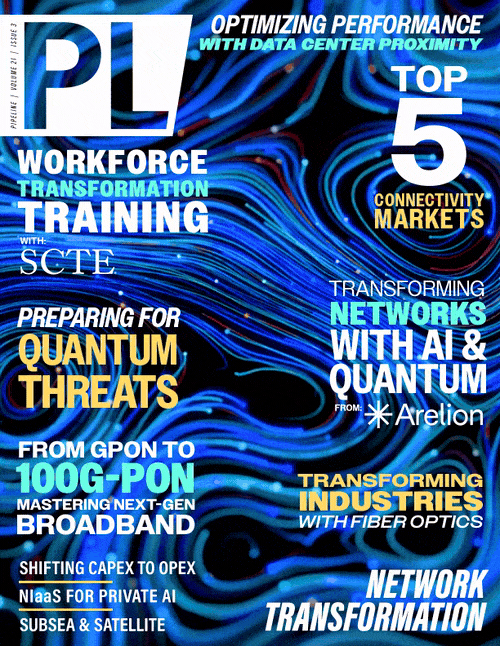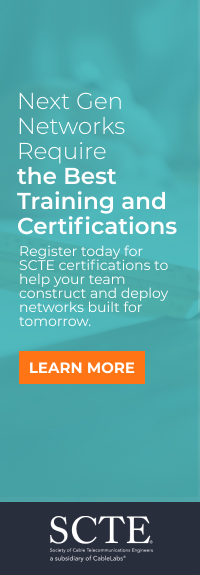Letter from the Editor - January 2025

Future predictions will dominate the headlines in the coming months as pundits postulate on where the world is going. But it’s important to discern the noise from information you can trust. Pipeline recently entered its 21st volume, encompassing over 250 issues, thousands of articles, countless (over 20,000) news stories, and over 20 years of industry insights. This gives us a keen perspective about where the world is headed, and our past predictions have panned out pretty well.
I've been here long enough to remember back around the turn of the century, when we asked why Microsoft was still shipping CD-ROMs when cloud and SaaS models first began to emerge. At the time it seemed like it was a no brainer, and it turned out it was.
In 2012, the year before Snowden blew the lid off the NSA PRISM project, Pipeline exposed the dangers of governmental data gathering, and later we sounded the alarm on the convergence of legislation, technology, and government actions. We warned of the imminent risks to critical infrastructure and for lawful surveillance just days before the Colonial Pipeline attack. We have been covering the promise of Artificial Intelligence (AI) since 2016, and provided tangible AI applications and front runners such as AT&T, IBM, Microsoft, and NVDIA, years before all the ChatGPT hype began. We started discussing Ethical AI in 2019. To us AI is a bit “old hat,” and if you have been reading Pipeline all along you would have been years ahead of the curve.
And the list goes on and on, from 1G through to 6G (and all the Gs in between), to the launch of VoIP, to the advent of blockchain – Pipeline has been there, and we’ve had your back. Now as we enter the new year, we ponder the future of networks and network technologies. However, we first need to determine what a network is, and that’s not as easy as you might think.
Researchers at MIT and SDC connected the first two computers in 1965, as the first example of packet switching. Over the last 60 years or so, that number has gone from two computers to 17 billion connected devices. And, “the network” (connectivity) has evolved from wired connectivity – bits, bites, and pipes – to the speed of light over fiber optic cables, to wireless, to extraterrestrial; and it's been cloudified and virtualized in that same time. And just when you thought it couldn’t get any more complicated, quantum entanglement showed up on the scene.
Pipeline began covering quantum computing and its security risks in 2017. In 2023, I touched on it in my monthly letter. We covered the first US commercial quantum network, and urged our readers to start preparing for Q-day. This year, quantum became even more tangible with IBM’s launch of its most advanced quantum computer, its quantum data center in Europe, and the announcement of Google’s Willow quantum chip, which can compute in under five minutes what would take today’s fastest supercomputer 10 septillion years.
Networks have now become necessities. They provide the fundamental connectivity that allows us to exist today. If networks go down, our lives and livelihoods are threatened. From governments, to mission-critical infrastructure, to the management of utilities, to medical IoT devices, connectivity underpins it all. Economies today are built upon connectivity. Networks also provide the foundation of all future innovations. It is a core layer of the Innovation Stack we spoke about in our recent Top Tech Mega-trends feature.
And, if you’ve spent time with family and friends over the holidays, you probably know firsthand how important the network and connectivity can be. I learned this the hard way, when my Samsung phone turned into a brick last month. It was a major inconvenience for me, but multiply it by five teenagers over the holidays when the Wi-Fi goes down, and you may have a riot on your hands.
Our dependence on technology, networks and connectivity will only continue to grow in the coming years. This has significant implications for technology and connectivity providers preparing for the future. Maintenance expenses are colossal, and highlight the need for greater efficiency and transformation. The risks and consequences of failures and cyberattacks are far more severe. Inequality due to the digital divide is accentuated. And a workforce needs to be trained to build, maintain and improve networks of increasing complexity, which makes this edition of Pipeline so important.
In this issue of Pipeline, we cover the most important network transformation and connectivity trends. SCTE focuses on evolving workforce training to support network transformation. Arelion looks network transformation through the lens of AI, fiber optics, FWA, and quantum networking. Crosstown Fiber explores how fiber optic networks are transforming industries. Harmonic charts the shift from GPON to 100G-PON to build flexible broadband networks for the future. Dispersive makes predictions about the cybersecurity coming impacts of quantum computing. Nile explains how Network-as-a-Service (NaaS) solutions transform financial models by shifting costs from CapEx to OpEx. TeleGeography identifies five fast-growing connectivity markets to watch in 2025. DE-CIX highlights efforts to bridge the digital connectivity divide and connecting continents. Sabey Data Centers emphasizes the importance of optimizing data center proximity and carrier relationships. Spirent explores how telcos can capitalize on AI innovation with Network-Infrastructure-as-a-Service (NIaaS). All this, plus the latest enterprise and communications technology news, and more.
We hope you enjoy this and every issue of Pipeline,
Scott St. John
Managing Editor
Pipeline



















